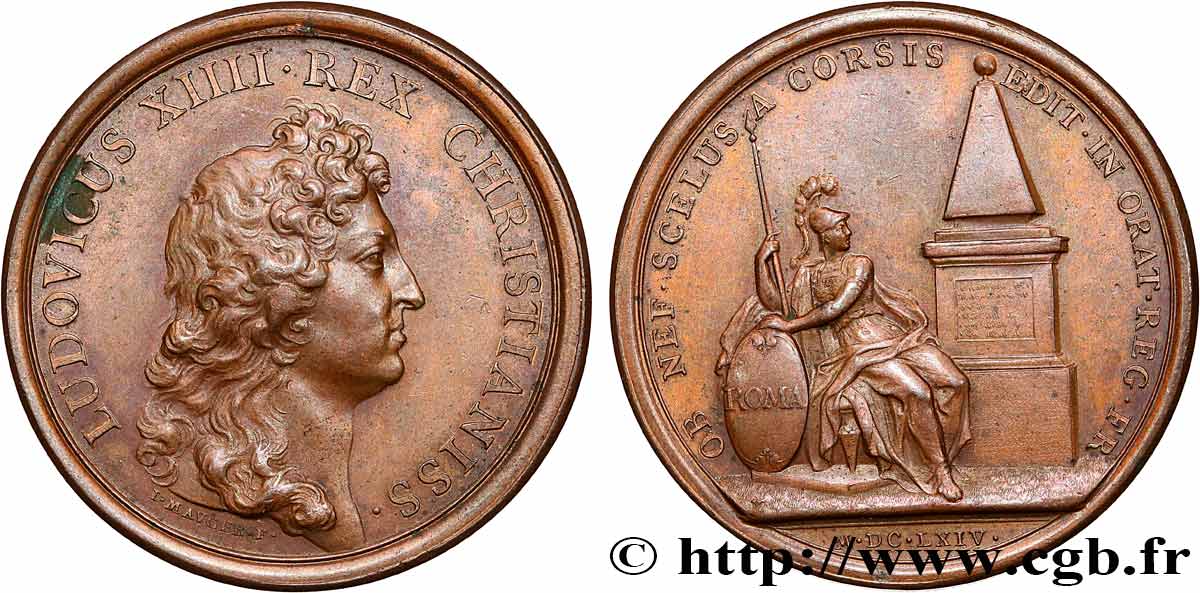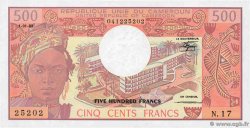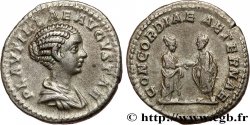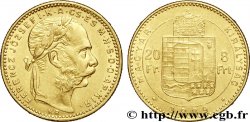Live auction - fme_782336 - LOUIS XIV "THE SUN KING" Médaille, Pyramide élevée à Rome
Usted debe firmar y ser un comprador aprobado para pujar, Inicia sesión para pujar. Las cuentas están sujetas a la aprobación y el proceso de aprobación se alcanzan dentro de las 48 horas. No espere hasta el día en una venta se cierra el registro.Al hacer una oferta en este artículo usted está firmando un contrato jurídicamente vinculante para comprar este artículo y haga clic en «oferta» constituye una aceptación de los términos de uso de live auctions de cgb.fr.
La subasta debe ser colocado en euros enteros cantidades venta only.The se cerrará en el momento en la descripción del artículo, no se ejecutarán las ofertas recibidas en el sitio después de la hora de cierre. Veces Transmition pueden variar y las ofertas pueden ser rechazadas si espera a los últimos segundos. Para más información envie el FAQ Live auction.
Las ofertas ganadoras estarán sometidas a un 18% IVA incluido por gastos de participación a la venta.
Las ofertas ganadoras estarán sometidas a un 18% IVA incluido por gastos de participación a la venta.
| Valoración : | 150 € |
| Precio : | 75 € |
| Oferta más alta : | 75 € |
| Fecha de fin de la venta : | 24 enero 2023 18:16:18 |
| participantes : | 1 participante |
Tipo : Médaille, Pyramide élevée à Rome
Fecha: 1664
Metal: cobre
Diámetro: 41 mm
Eje de acuñación: 12 h.
Acuñador MAUGER Jean (1648-1712)
Peso: 31,32 g.
Canto: lisse
Cuño: sans poinçon
Comentarios sobre el estado de conservación:
Patine marron hétérogène d’aspect irisé, présentant quelques taches d’oxydation. Petite usure sur les hauts reliefs. Présence de quelques rayures
N° en los catálogos de referencia :
Anverso
Titulatura del anverso: LUDOVICUS XIIII . REX CHRISTIANISSIMUS..
Descripción del anverso: Buste de Louis XIV à droite, signé I. MAVGER. F.
Traducción del anverso: (Louis XIV, roi très chrétien).
Reverso
Titulatura del reverso: OB NEF. SCELUS A CORSIS EDIT. IN ORAT. REG. FR // À L’EXERGUE : POSITA PYRAMIDE / M DC LXIV.
Descripción del reverso: La ville de Rome, sous la figure d’une femme assise, tenant un javelot et un bouclier sur lequel on lit : ROMA. A droite la nouvelle pyramide.
Comentario
En août 1662, les gardes de l’ambassadeur du roi de France à Rome eurent une querelle avec les gardes corses du pape. Du côté français, il y eut des blessés et même un mort. Comme la cour de Rome hésitait à présenter ses excuses, l’ambassadeur quitta la ville. Louis XIV, de son côté, ordonna le nonce apostolique de quitter la cour et occupa Avignon et le Comtat Venaissin. une guerre semblait éclater d’un moment à l’autre.
Finalement, une paix fut conclue entre le pape Alexandre VII et le roi de France. Louis XIV restituait le Comtat et le pape en échange offrait comme réparation le renvoi de la garde corse, une déclaration d’excuses du nonce et l’érection d’une pyramide à Rome, en mémoire à ces excuses.
La pyramide fut érigée au commencement de l’année 1664. Le 29 juillet de la même année, le neveu du pape, le cardinal Chigi, fut reçu en audience dans la chambre du roi et présenta les excuses de Rome (médaille 79). Le pape Clément IX, le successeur d’Alexandre VII, désirait la destruction de la pyramide, ce témoignage de l’humiliation papale. Louis XIV finit par donner son consentement et la pyramide fut détruite en 1668.
In August 1662, the guards of the King of France's ambassador in Rome had a quarrel with the Pope's Corsican guards. On the French side, there were injuries and even one death. As the court in Rome hesitated to apologize, the ambassador left the city. Louis XIV, for his part, ordered the papal nuncio to leave the court and occupied Avignon and the Comtat Venaissin. A war seemed likely to break out at any moment. Finally, peace was concluded between Pope Alexander VII and the King of France. Louis XIV returned the Comtat, and the Pope, in exchange, offered as reparations the dismissal of the Corsican guard, a declaration of apology from the nuncio, and the erection of a pyramid in Rome as a memorial to these apologies. The pyramid was erected at the beginning of 1664. On July 29 of the same year, the Pope's nephew, Cardinal Chigi, was received in audience in the king's chamber and presented Rome's apologies (medal 79). Pope Clement IX, the successor of Alexander VII, desired the destruction of the pyramid, this testimony to papal humiliation. Louis XIV finally gave his consent and the pyramid was destroyed in 1668
Finalement, une paix fut conclue entre le pape Alexandre VII et le roi de France. Louis XIV restituait le Comtat et le pape en échange offrait comme réparation le renvoi de la garde corse, une déclaration d’excuses du nonce et l’érection d’une pyramide à Rome, en mémoire à ces excuses.
La pyramide fut érigée au commencement de l’année 1664. Le 29 juillet de la même année, le neveu du pape, le cardinal Chigi, fut reçu en audience dans la chambre du roi et présenta les excuses de Rome (médaille 79). Le pape Clément IX, le successeur d’Alexandre VII, désirait la destruction de la pyramide, ce témoignage de l’humiliation papale. Louis XIV finit par donner son consentement et la pyramide fut détruite en 1668.
In August 1662, the guards of the King of France's ambassador in Rome had a quarrel with the Pope's Corsican guards. On the French side, there were injuries and even one death. As the court in Rome hesitated to apologize, the ambassador left the city. Louis XIV, for his part, ordered the papal nuncio to leave the court and occupied Avignon and the Comtat Venaissin. A war seemed likely to break out at any moment. Finally, peace was concluded between Pope Alexander VII and the King of France. Louis XIV returned the Comtat, and the Pope, in exchange, offered as reparations the dismissal of the Corsican guard, a declaration of apology from the nuncio, and the erection of a pyramid in Rome as a memorial to these apologies. The pyramid was erected at the beginning of 1664. On July 29 of the same year, the Pope's nephew, Cardinal Chigi, was received in audience in the king's chamber and presented Rome's apologies (medal 79). Pope Clement IX, the successor of Alexander VII, desired the destruction of the pyramid, this testimony to papal humiliation. Louis XIV finally gave his consent and the pyramid was destroyed in 1668








 Informar de un error
Informar de un error Imprimir la página
Imprimir la página Comparte mi selección
Comparte mi selección Haz una pregunta
Haz una pregunta Consignar / vender
Consignar / vender
 Descriptivo
Descriptivo















